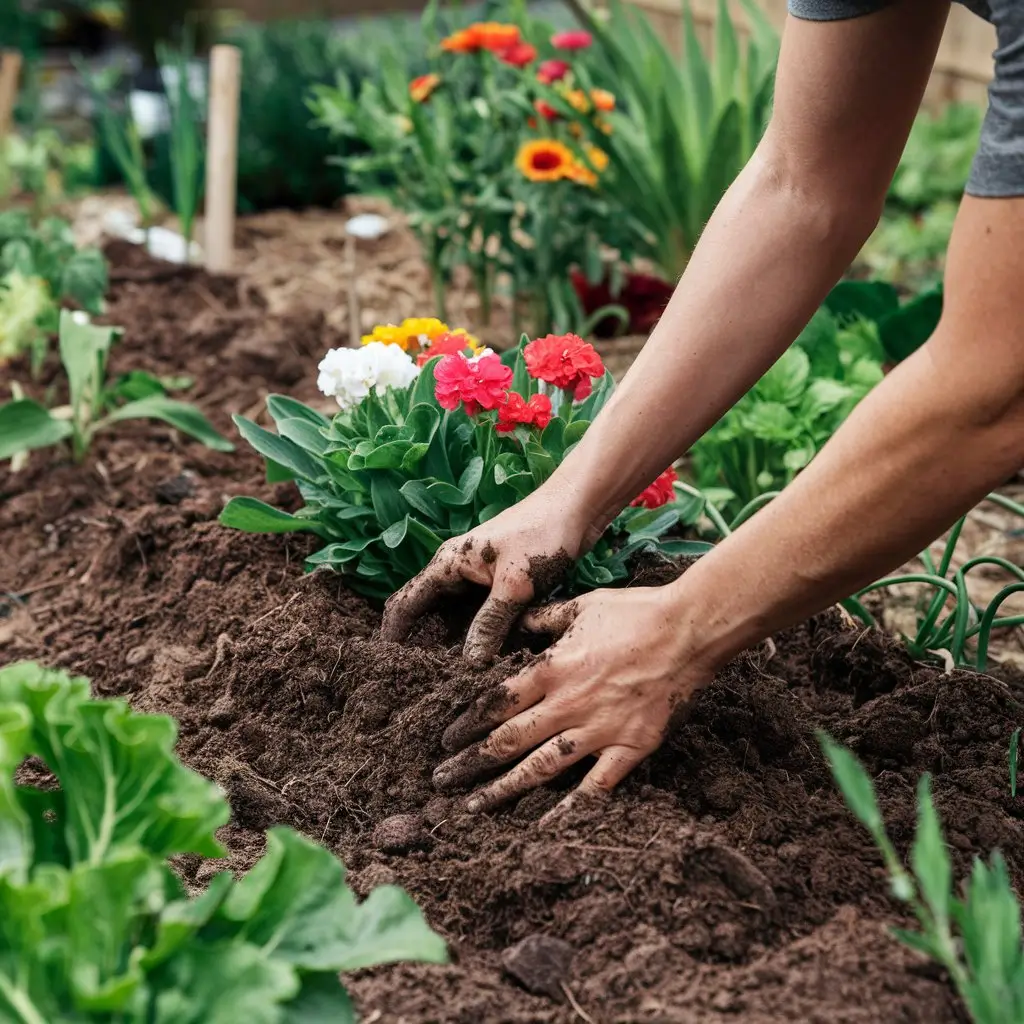Finding your flow state can transform the way you approach tasks, creativity, and personal growth. Often described as being “in the zone,” flow is a mental state where you become fully immersed in an activity, leading to heightened focus, productivity, and satisfaction. Understanding and accessing this state is crucial for enhancing both personal and professional outcomes. This article explores what flow is, how it feels, and practical strategies to trigger it in your work, hobbies, and daily life.
Understanding Flow State
What is Flow?
Flow is a psychological state where individuals become fully immersed in an activity, resulting in heightened focus and enjoyment. Coined by psychologist Mihaly Csikszentmihalyi, the term encapsulates a profound sense of engagement and fulfillment that people experience when they are performing tasks that they are passionate about. Flow is often described as a state of optimal experience, where the person feels a perfect match between their skills and the challenges presented by the task. This balance creates an environment where distractions fade away, and the individual can focus entirely on the task at hand.
The Psychology Behind Flow
The flow state is rooted in several psychological principles. Central to the experience is the concept of challenge versus skill. When a task is too easy, it can lead to boredom; conversely, when it is too difficult, it can cause anxiety. The sweet spot for entering flow is when the task challenges one’s existing skills without overwhelming them. This balance creates a sense of mastery and accomplishment, prompting further engagement.
Moreover, flow is characterized by intense concentration and a sense of control over the activity. During flow, individuals often report a loss of self-consciousness and an absence of worry about failure or external judgement. This deep focus allows them to perform at their best, tapping into their full potential.
Benefits of Achieving Flow
The benefits of achieving flow extend beyond immediate enjoyment. Individuals who frequently experience flow report various positive outcomes, including:
- Increased Productivity: When in flow, people can accomplish tasks more efficiently and effectively. The high level of focus allows for quicker problem-solving and creativity, leading to greater output.
- Enhanced Creativity: Flow is a breeding ground for creativity. The deep immersion in an activity allows individuals to think outside the box, make connections between ideas, and produce innovative solutions.
- Improved Well-Being: Flow contributes significantly to overall well-being. People who engage in flow-inducing activities often report higher levels of happiness, fulfillment, and life satisfaction. The joy of being in flow can lead to a more positive outlook on life.
- Skill Development: Regularly engaging in activities that promote flow helps individuals develop their skills over time. The continuous challenge and the need to adapt and grow in response to tasks foster a sense of progress and improvement.
- Stress Relief: Flow can serve as an excellent coping mechanism for stress. Immersing oneself in an enjoyable activity provides a mental break from daily pressures, allowing individuals to recharge and return to challenges with renewed energy.
The Experience of Being in the “Zone”
Describing the Flow Experience
Being in the “zone,” or experiencing flow, is often described as one of the most fulfilling states a person can attain. When in flow, individuals report a deep sense of immersion in their activity, characterized by several distinct features:
- Time Distortion: One of the most remarkable aspects of flow is the altered perception of time. People often lose track of how long they have been engaged in their task, with hours feeling like mere minutes. This time distortion occurs because the individual is so focused on the activity that they become unaware of external time cues.
- Effortlessness and Joy: Activities that induce flow often feel effortless. Individuals may find themselves performing at their peak without the feeling of strain or pressure. This sense of ease is accompanied by joy and satisfaction, as the activity becomes intrinsically rewarding. Participants often describe feeling a natural high, driven by the pleasure derived from the task itself.
- Heightened Awareness and Concentration: Flow brings about a heightened sense of awareness and concentration. Individuals become acutely aware of their surroundings and the nuances of their activity. This focused attention allows for greater sensitivity to feedback, resulting in improved performance and better decision-making.
- Loss of Self-Consciousness: In flow, people often experience a loss of self-consciousness, where worries about how they are perceived or the fear of failure dissipate. This absence of self-judgment enables them to fully engage in the task without distractions, leading to a more profound connection with the activity.
- Sense of Control: When in flow, individuals often feel a sense of control over their actions and the outcome of the task. This feeling of competence and mastery enhances the overall experience, reinforcing their motivation to continue engaging in the activity.

Personal Anecdotes and Examples
Real-life examples illustrate the powerful experience of being in the zone. Athletes commonly report experiencing flow during peak performances, where their actions seem automatic and instinctive. For instance, a basketball player may feel as if every shot they take is destined to go in, as they move fluidly and effortlessly across the court.
Artists also frequently enter flow while creating. A painter may lose themselves in the act of brush strokes, completely absorbed in their work, while a musician may find that the notes flow seamlessly from their instrument. In these moments, the creation process becomes a dance between skill and expression, leading to extraordinary outcomes.
Professionals in high-pressure environments, such as surgeons or software developers, can also experience flow. A surgeon performing a complex operation may enter this state, focusing intensely on the procedure, while a developer coding a challenging algorithm might feel the same flow as they solve intricate problems.
These anecdotes highlight that flow can occur across diverse activities, whether in sports, arts, or professional tasks. The common thread is the intense engagement that leads to peak performance and profound satisfaction, illustrating the universal nature of the flow experience.
Practical Ways to Trigger a Flow State
Preparing Your Environment
Creating an environment conducive to flow is one of the most crucial steps you can take. Here are some practical tips:
- Determine all workspace disruptors that could divert your attention then remove them from your environment. This could include silencing notifications on your phone, using website blockers for distracting sites, or even closing unnecessary tabs on your computer. A clean and organized workspace can also help reduce visual clutter, allowing for greater focus.
- Create a Dedicated Workspace: Designating a specific area for focused work can signal to your brain that it’s time to enter a flow state. This space should be comfortable and equipped with all the tools you need to immerse yourself in your activity. Whether it’s a home office, a cozy corner, or a favorite café, find a spot that fosters concentration.
- Importance of Comfort and Ergonomics: Comfort plays a significant role in maintaining focus for extended periods. Acquire office furniture that enhances proper posture and minimizes physical tension. A comfortable chair, an adjustable desk, and good lighting can make a significant difference in how long you can stay engaged in your work.
Setting Clear Goals
A person needs well-defined and reachable targets to achieve the flow state. Here’s how to set effective goals:
- Establish Specific Objectives: Instead of vague tasks like “work on project,” create specific, measurable goals. The deadline for first report draft completion is set for 3 PM. The application of specific time frames enables people to concentrate their efforts while developing clear focus.
- Break Tasks into Manageable Steps: Large projects can be overwhelming and may hinder flow. Break them down into smaller, actionable steps. By breaking down tasks this way you not only simplify their size but also gain regular feelings of accomplishment after finishing each completed section.
- Monitor Progress: Keeping track of your progress can provide motivation and a sense of direction. Consider using checklists, progress bars, or journaling to visualize how far you’ve come and what remains to be done.
Finding the Right Challenge Level
The balance between challenge and skill is critical for flow. Here are ways to find that sweet spot:
- Before beginning any work you should evaluate your existing skills capability. Are you a beginner, intermediate, or advanced? Understanding this will help you select tasks that match your abilities while still presenting a challenge.
- Your challenge becomes more demanding once you discover a task can be accomplished straightforwardly. For example, if you’re a writer, challenge yourself to write a longer piece or experiment with a new genre. This approach keeps you engaged without overwhelming you.
- Seek Feedback: Regularly seek feedback on your performance. Constructive feedback can help you recognize areas for improvement and adjust your challenges accordingly. The tracking system assists in motivational maintenance because it shows your continuous development.
Cultivating Focus and Mindfulness
Enhancing concentration and mindfulness can significantly contribute to achieving flow. Here are some techniques:
- Participating in mindfulness meditation establishes neural pathways which enhance brain focus ability. Even just a few minutes of meditation each day can improve your ability to concentrate and reduce distractions.
- Use the Pomodoro Technique: This time management method involves working for 25 minutes and then taking a short break. The structured intervals help maintain focus and prevent burnout while encouraging flow during work periods.
- You should establish distraction-free areas by implementing digital restrictions on social media platforms alongside other online interferences during your dedicated work schedule. People should utilize applications which prevent them from accessing specific websites during their designated workplace hours.
Engaging in Activities You Love
Pursuing activities that you are passionate about is essential for accessing flow. Here’s how to do it:
- Identify Your Interests: Take time to reflect on what activities genuinely excite you. Whether it’s painting, coding, gardening, or playing music, engaging in activities that resonate with you naturally fosters flow.
- Create regular blocks for personal work on initiatives that fulfill your passionate interests. These projects often allow for greater exploration and creativity, making it easier to enter flow.
- Schedule both work periods and leisure time because they complement each other while enabling you to recharge. The balanced effort between work and relaxation enables you to replenish your energy and return stronger to daily tasks, which promotes easy access to flow.

Flow in Different Areas of Life
Flow in Work
Workplace productivity together with job satisfaction experiences enhancement when workers achieve flow states. The following strategies will help achieve flow in professional workplaces:
- Seek Autonomy and Creative Freedom: When employees have the freedom to make choices about how they complete their tasks, they are more likely to enter a flow state. The workplace should foster freewill expression of employee ideas followed by innovative problem-solving approaches.
- Set Clear Expectations and Goals: Clearly defined tasks and objectives can help employees understand what is expected of them. When employees have a clear sense of direction, they can focus more on the task at hand without the distraction of uncertainty.
- Foster a Supportive Culture: A collaborative and supportive work environment can enhance flow. Encouraging open communication and teamwork allows individuals to share ideas, provide feedback, and feel connected, which can boost engagement in tasks.
- Taking scheduled interruptions supports both energy conservation and protects employees from job-related exhaustion. Encourage employees to step away from their desks periodically to recharge, promoting sustained focus when they return to work.
- Emphasize Skill Development: Provide opportunities for professional development and training. When employees feel that they are growing in their skills, they are more likely to take on challenges that lead to flow.
Flow in Hobbies
Engaging in hobbies is one of the most accessible ways to experience flow. Here’s how to cultivate flow in leisure activities:
- Choose Activities that Excite You: Focus on hobbies that genuinely interest you. Whether it’s painting, playing a musical instrument, or hiking, engaging in activities you love naturally fosters flow.
- Schedule Time for Hobbies: Treat your hobbies with the same importance as work commitments. Setting aside dedicated time for leisure activities can help you immerse yourself fully in them and enhance your chances of experiencing flow.
- Challenge Yourself: Push your boundaries within your hobbies. If you’re a musician, try playing a more complex piece. If you enjoy painting, experiment with new techniques. This gradual increase in challenge can help you stay engaged and motivated.
- Join a Community: Engaging with others who share your interests can enhance your experience. Whether through classes, clubs, or online forums, connecting with like-minded individuals can provide inspiration and motivation, making it easier to enter flow.
- Practice Mindfulness in Hobbies: When engaging in leisure activities, practice being present in the moment. Focus on the sensations and experiences associated with the activity to deepen your immersion and enhance the likelihood of flow.
Flow in Daily Life
Flow can be integrated into everyday activities, enhancing your overall quality of life. Here are ways to incorporate flow into daily routines:
- Mindful Cooking: Turn meal preparation into a flow-inducing activity. Focus on the textures, colors, and aromas of the ingredients as you cook. Becoming mindful with a task draws out pleasure from otherwise ordinary work.
- Engaging in Exercise: Physical activity can be a powerful trigger for flow. Whether it’s running, dancing, or practicing yoga, find a form of exercise that challenges you and brings you joy. The combination of movement and focus can lead to a flow state.
- Gardening: Gardening allows individuals to connect with nature while engaging in a task that requires focus and skill. Whether planting seeds, pruning, or arranging flowers, gardening can provide a satisfying sense of flow.
- Careful Commuting: Change your commute into an opportunity for stream. Listen to audiobooks or podcasts that interest you, or practice mindfulness by observing your surroundings. This shift in perspective can turn routine travel into a meaningful experience.
- Household Chores: Even mundane tasks like cleaning or organizing can become flow experiences. Put on music, set a timer, and focus solely on the task at hand. The sense of accomplishment you feel upon completion can enhance your daily satisfaction.
Conclusion
Mastering the flow state brings useful skills to boost productivity together with creativity but also creates enhanced life satisfaction. By understanding what flow is and experimenting with various strategies, you can unlock this powerful state of being. Embrace the journey of discovering flow in your work, hobbies, and daily life, and enjoy the long-term benefits it brings.

